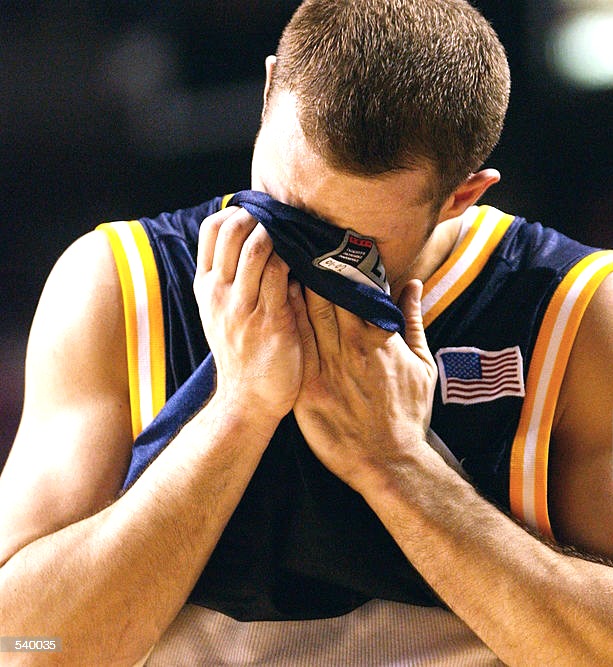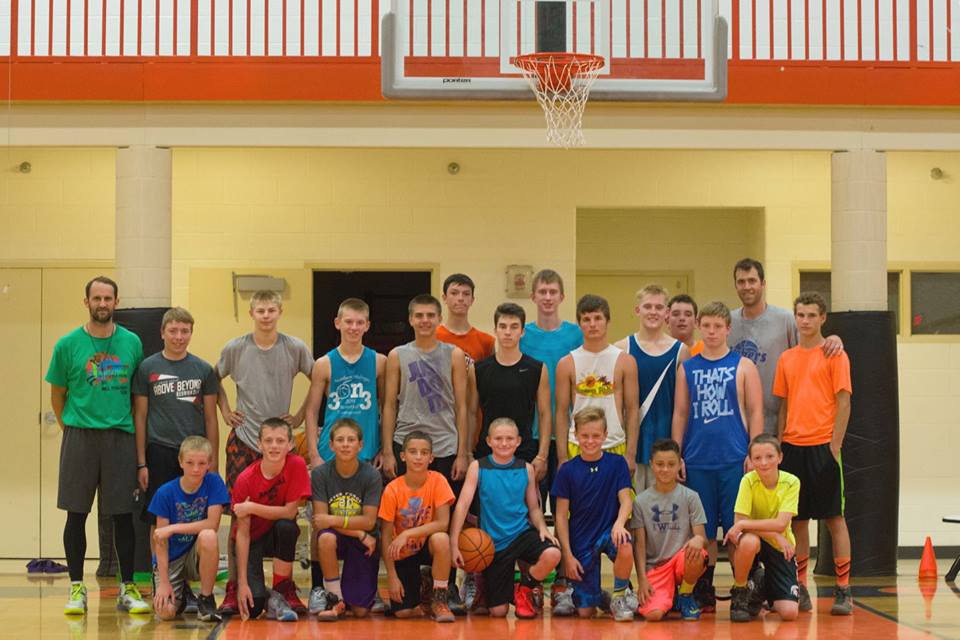
“Welcome to the hood,” Andrew said, grinning.
“Drew, you sure I’m good here man? Everyone is looking at me.”
“You’re with me. Relax.”
I glanced around, slunk down in his passenger seat. I had just turned 20 years old and suddenly wasn’t sure of my choice to accompany Andrew to his mom’s home in inner city Detroit. At any moment I thought bullets were going to pass through his car and rip through my body.
But there was good news (no, it wasn’t the Kevlar jacket I had on), I had just survived playing in St. Cecilia, one of the most famous basketball gyms and runs in the country. St. Cecilia was a cracker box gym with no space and a raucous, engaging crowd. It was my first time playing there. I was surprised I was even allowed on the court to be honest, because every time I touched the ball, or defended the ball, a certain murmur and electricity went through the stands and opposing players.
“Attack him.”
“Score on him.”
“Go at him.”
“C’mon, get this dude off the court,” they laughed.
And yet, there was Andrew, playing alongside me, just grinning like a little kid in a candy store.
“Let’s go Huff– you have to earn everything here.”
The 2nd Secret to Winning Basketball Championships.
And this secret came to me decades after realizing and reflecting on the formative years of my college career and how they were about learning how to build relationships inside your tribe or team (even if you have to wear Kevlar from time to time), find your authentic self within your obsession and your tribe, and learn to go through psychological and physical pain or suffering with them to improve your skills.
First of all, it’s a simple idea or personal philosophy to build relationships with people that embrace the struggle to be the best within the same field or obsession as you. I loved the game of basketball, just like Andrew did. I saw Andrew suffering and struggling to be the best everyday. I saw where he came from and how hard it was for him. He didn’t have the resources I had, but yet, we both had our own struggles to get where we were.
Sports offers us an even playing field, where the athlete that can embrace the struggle and the pain, and can build skills for themselves. The more skills you have, the more valuable you are on the court.
Simple right?
Yet, playing at the St. Cecilia with my teammate pushed me out of my comfort zone and brought us closer together.
So focus for a second. Ask yourself some questions.
-
Who is in your basketball tribe?
-
What kind of people do you need in your tribe to be successful with your obsession?
-
Who will push your kid or program to develop their skills and learn to embrace struggle and create radical self-reliance on the court?

I can’t answer these questions for you, but I can help you ask yourself the right questions.
There won’t be many people willing to suffer with you, sweat with you, shoot with you, rebound with you, play 1 on 1 with you, and push you to be your best. And maybe you (yeah, you kid) just like the idea of being a college basketball player. Maybe you just like the idea or vision of being on TV, or in the paper, or having success, but don’t actually enjoy the struggle to get there.
That’s okay if you don’t, but go find a struggle you actually enjoy.
The truth is, you have build a tribe around your obsession to win championships.
Your team has to stick together. Your team has to have strong bonds. And that happens on the micro level first. I learned quickly that building a tribe helped me improve at the game of basketball quicker than if I was trying to do it on my own. And so it begins, when you have a tribe around an obsession, you have quicker growth. And when you have quicker growth, you reach your potential and self-actualize your goals faster.
You have success faster and when the team has more success, you get more accolades. A team that acts as a tribe cherishes those moments together.
—————–
“Attack them Huff. Attack them every time you get the ball,” Andrew would whisper, as he snatched a rebound out of the air and passed it to me.
Then he would wave his hand, beckoning me forward– beckoning me to face my fears, to grow, and to stop being passive. But we all have to go through our own internal struggles, and to put it simply, I just wanted to fit in (and maybe that was because before I stepped on the court, I gawked and watched NBA great Jalen Rose score 60 points without sweating, only trash talking to everyone that guarded him).
“You’re not in Kansas anymore Huff.”
“No kidding,” I said back, trying to feign a smile, but eventually the game progressed and I started to forget I was a stranger there, what color my skin was, and where I was from. The game doesn’t care what color you are. The ball doesn’t go in the basket because of your religion or race.
Basketball is basketball.
So again, who is in your basketball tribe?

I left St. Cecilia gym feeling grateful, grateful Andrew took me into a place where legends were made and played and developed their basketball skills at a level most players never get to see. He took a chance on me and I appreciated it. But after playing at the St. Cecilia and visiting Andrew in his home, it started to make sense why he had won a state championship in Detroit East Catholic High School.
Andrew wasn’t afraid to be different. He wasn’t afraid to challenge what society had told him he had to be.
He had a community that never let him settle for anything but his best. He had a brother that pushed him and challenged him. That’s what parents and family and tribe is for– to push people to be the best versions of themselves, through struggles and suffering and all the stuff we don’t usually like. See, Andrew Mitchell was overlooked. People said he was too small. Too light. Too fragile. Kent State had been one of his only suitors.
In my eyes, every championship team I ever played on had players that were developing this obsession and culture within the team. And when that happens, magic happens. So the Kent State University Men’s Basketball tribe formed. This culture was passed down to us, and we passed it down to the next generation of incoming freshman.
And let me brag on Andrew for a second. In my opinion, he was one of Kent State’s greatest competitors and one of the Mid American Conference’s greatest basketball winners. I was lucky to have him as a teammate. He wasn’t the only teammate that pushed me, but he was the first at Kent State. And best of all, no one would tell you that our team would go onto win three MAC championships, three MAC tournament championships, and three NCAA tournament appearances (including our Elite Eight run), and break every Mid-American Conference team record ever made by some of MAC’s NBA greatest players and teams-– from Dan Marjele, Ron Harper, Bonzi Wells, Gary Trent, Wally Szczerbiak, Nate Thurmond and Earl Boykins.
And it all started with our obsession for basketball and building that brotherhood. That’s one of the biggest secrets to winning at anything in my book.
To your continued success,
Trevor Huffman
PS. Need some help with your basketball mind? Join the THBA tribe and start my Elite Mental Training course!











